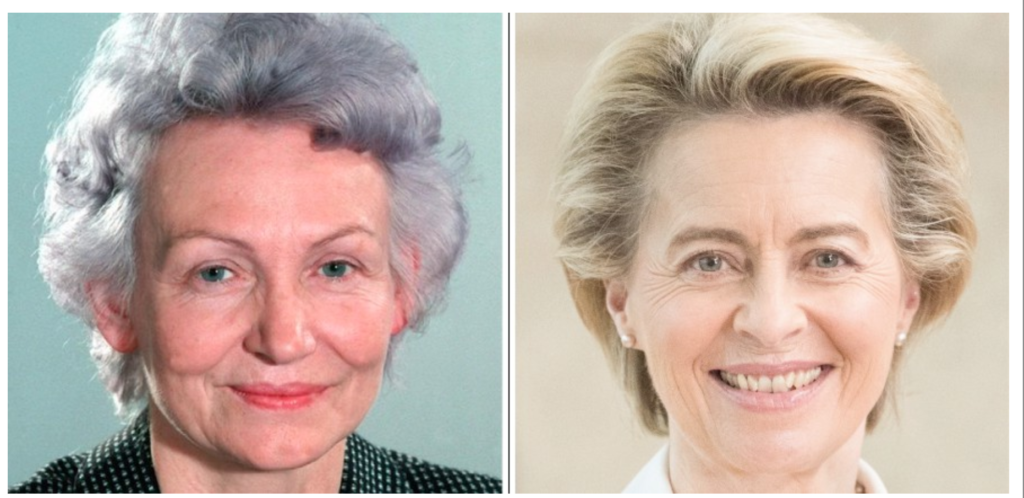So different and so similar! At first glance, these ladies seem to have nothing in common. Margot Honecker came from a working-class background and for all practical purposes had no higher education. Ursula von der Leyen, on the contrary, is a member of the highest strata of society, a woman with as much higher education as possible. And yet, leaving aside low and high birth and the lack or acquisition of education, these two figures share a great many similarities. Even the facial similarity.
Someone with poorer eyesight, in poorer lighting, casting a fleeting glance could easily mistake one lady for the other. Especially since both of them dress in a very similar way (to be precise, one would have to refer to Mrs. Honecker in the past tense, as she is no longer alive, but in the following text we will refer to her as if she were among us). Both are of German nationality and both pursue a successful political career. Both Margot and Ursula believe deeply in the ideologies to which they have dedicated their lives; both fervently work to improve the plight of the disadvantaged, exploited and marginalized. Margot cared for the working class and peasantry, Ursula – for sexual minorities and (wouldn’t you know!) black Europeans or African Europeans. Further, both Margot and Ursula are very militant ladies: the former set her sights on the military training of East German youth, anticipating the coming clash with capitalist states; the latter is hell-bent on punishing Putin and putting him on trial, and advocates supporting the Ukrainian war effort to the last Ukrainian. (So much for the gentle or peaceful disposition of women, who, by participating in politics, were supposed to balance male aggressiveness.)

There is another common denominator for both ladies, a very important common denominator: neither Margot Honecker nor Ursula von der Leyen, mingling for years in their own circles, ideologies and politics, holding high positions of power for years, has the faintest idea of what lives normal people live and what an average person wishes for. Worse still, both women are convinced that they know better what people want, and because they know better and – as they firmly believe – hold high moral ground, they try to make life better for their subject citizens: Margot saw the salvation of humanity in the Soviet version of socialism, Ursula – in its European counterpart. Both one and the other are convinced that the path they are following is the right one, and that their views are shared if not by a crushing, then at least by an overwhelming majority of citizens.
By the end of her life, Margot Honecker had managed to find out how wrong she was. She had to flee the country she ruled, chased away by the people from whom she expected gratitude. To the end of her days, she denied reality and maintained that East Germans had been seduced by capitalist mirages and that they would regret it. We don’t know whether Ursula von der Leyen will be given a chance to learn about the “ingratitude of the people.” We can be sure, however, that if it came to that, she would deny reality in exactly the same way as her East German political colleague of a few decades ago.
Margot Honecker and Ursula von der Leyen: look at their smiling, seductive faces. How much goodness, warmth and humanity radiates from them!




